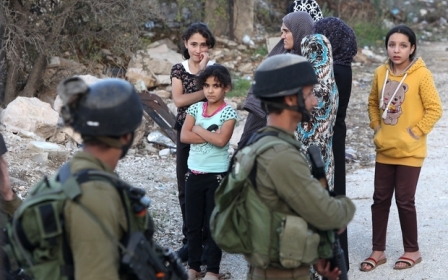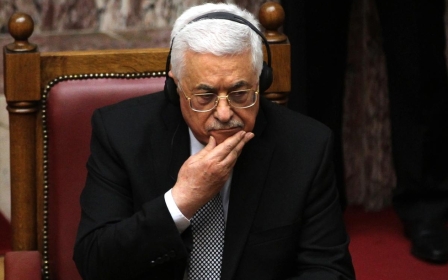What's behind Hamas's release of Gilad Shalit video?

A video, recently released by the the military wing of the Palestinian movement Hamas, the Qassam Brigades, showing former captive Israeli soldier Gilad Shalit, has sparked mixed reactions among Palestinians and in Israel.
Shalit was captured by Hamas and spent five years in captivity before being released in October 2011 as part of a prisoner-exchange deal, brokered by Egypt and Germany.
Some asked why Hamas would release such a video - which shows Shalit being kept in relative comfort and luxury compared to the treatment Palestinian prisoners receive in Israeli jails - now, five years after his release.
Further video segments released show moments where Shalit is grilling meat on a barbeque on what looks like a beach, and sipping tea while watching TV with Hamas fighters.
Hamas explained that the release of the video was to show the operation of one of its secret units used to guard Israeli prisoners of war. But the underlying reason for the timing of the release could be to initiate a prisoner exchange deal, once again, as Hamas continues to send signals that they hold an Israeli soldier or soldiers captured during the 51-day war in the summer of 2014.
Hamas’ Qassam Brigades video appears to illustrate a point that Shalit received humane and even pleasant treatment whilst in captivity, perhaps, in stark contrast to the way Islamic State (IS) mistreat their captives, despite the fact that many in the West would view Hamas and IS in the same category.
Despite the lack of information for almost 10 years since the capture of Shalit in 2006, the public is now receiving new information shown by Hamas for the first time.
In Gaza, the belief is that although Hamas has its own faults, it is an injustice to truth to liken it to groups like IS. Some of the criticism of Hamas, aired on social media, is that Israel doesn’t treat Palestinian prisoners in the same way, implying that Hamas is being too soft and accommodating when Palestinian prisoners are not accorded the same treatment.
It may be, however, that Hamas’ motive is more a PR move - both Hamas and IS have their preferences for PR stunts.
Israeli prisoners for exchange?
But the message, seemingly delivered at the end of the 10-minute video, shows the name and date of birth of an Israeli soldier, believed to be captured. The video shows a Hamas member placing a head and shoulders photo next to two unidentified figures, and raises some questions as to who the captives are.
The video, which was declared as “permitted to be published by Qassam Brigades General commander”, identified five members of the brigade's Shadow Unit involved in securing Shalit, whom later died in different attacks.
But the video also carries an explicit message to Israel that Qassam Brigades are able to capture and hold Israeli soldiers, in a relatively relaxed atmosphere, and Israel would never be able to locate their whereabouts. The Qassam Brigade message seems to go against Palestinian and Israeli thinking that Shalit was kept under ground, in dark surroundings and unusual circumstances - but instead, was able to move around and communicate with his prison guards.
Hamas would also seem to be sending messages to the Israeli public that there are soldiers still captured and held in Gaza - and more so, a clear video message that Hamas and its Shadow Unit adhere to Islamic rules and “treat the prisoners of the enemy with dignity and respect in accordance with Islamic rules and support them financially and morally, while keeping in consideration the way that the enemy treats prisoners of the resistance” as the narrator of the video stated.
Israeli media focused mainly on Shalit being kept in dark and inhumane conditions, yet other Israeli reports stated that Shalit beat his Hamas guards during various sessions of the video soccer game, FIFA.
The Qassam Brigades suggest that they were not afraid, or disrupted, during the five years while Shalit was in custody. The video, as much as it pays tribute to one of Qassam's secret units, is meant to maintain support by showing the people of Gaza that Hamas's military wing is capable of hiding prisoners of war and not releasing any information on them.
Israeli newspapers interpreted the video in various ways, suggesting the video is designed to apply pressure on the families of Israeli soldiers believed to be in the custody of Hamas, in Gaza, since the 2014 war.
One of the video scenes shows curtains, seeming to suggest a hostage inside an apartment, above ground level and not underground.
Israeli security ridiculed online
The Shalit file, which ended with the release of 1,047 Palestinian prisoners, has been re-opened now to the Palestinian and Israeli publics. The criticism Hamas has received is surely less than the sarcastic remarks made in relation to Israeli security, who were unable to find the whereabouts of Shalit during five years of captivity.
Sarcasm among Palestinians went further, suggesting that missing Israeli soldier Shaoul Aron was seen buying falafel from one of the famous falafel shops in Gaza. Some Gazans commented that in the next war Israeli troops would not mind handing themselves over to Hamas, as a free barbeque is not necessarily a bad idea, especially in well-lit rooms, above ground level, playing sport video games with their captors.
This atmosphere of ridicule has created a distraction from larger media campaigns blaming Hamas and Fatah for frequent lengthy power-outages in Gaza. Now Hamas has sent a new message to different audiences: it is a message of distraction to maintain support for Hamas by average Palestinians, and a wake-up call to Israel - that there might still be Israeli soldiers held captive in Gaza, and to the international community that Hamas is not like IS in their treatment of prisoners.
A message to regional powers is to indirectly suggest that Hamas will not mind getting European mediators involved in prisoners negotiations, which means excluding some Arab states.
Another message seems to be one from Hamas leaders to boost the morale of Hamas members and show that their military leadership is still in control over the narrative.
However, the timing for this is still puzzling, but it would not be of any surprise that Hamas is now starting to master the PR game to distinguish itself from IS and probably engage more with the international community by showing that it still has power that can’t be ignored.
- Mohammed Omer is an award winning Palestinian-Dutch journalist, based in Gaza
The views expressed in this article belong to the author and do not necessarily reflect the editorial policy of Middle East Eye.
Photo: Israeli soldier Gilad Shalit at the French embassy in Tel Aviv on 11 January, 2012 (AFP).
New MEE newsletter: Jerusalem Dispatch
Sign up to get the latest insights and analysis on Israel-Palestine, alongside Turkey Unpacked and other MEE newsletters
Middle East Eye delivers independent and unrivalled coverage and analysis of the Middle East, North Africa and beyond. To learn more about republishing this content and the associated fees, please fill out this form. More about MEE can be found here.





